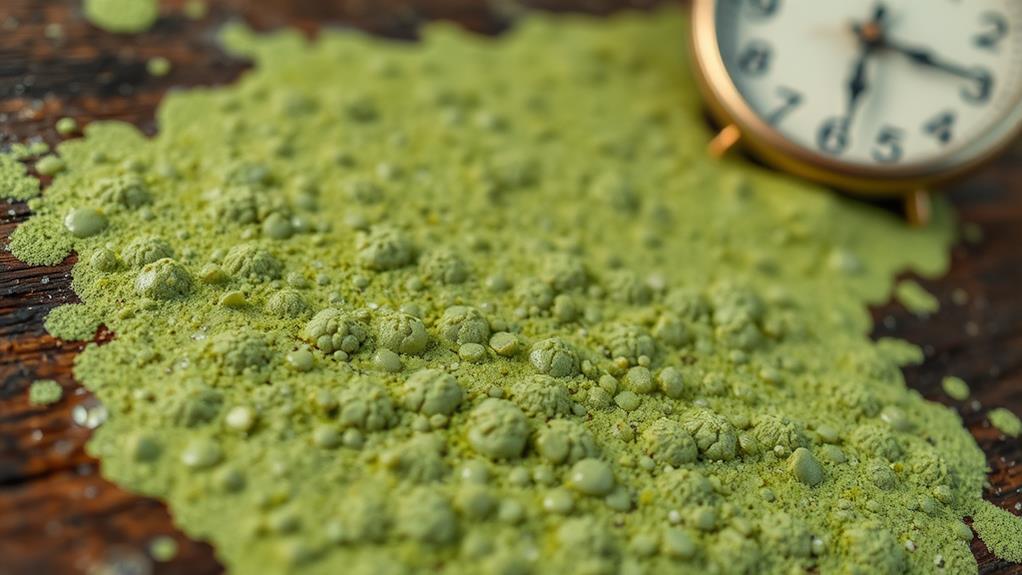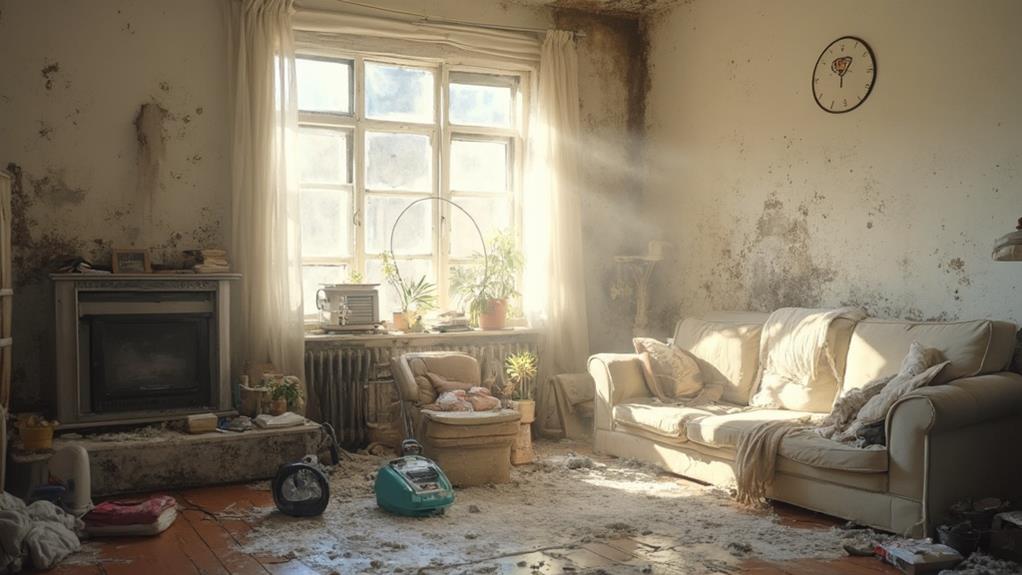Quick action is critical in mold prevention due to the rapid growth of mold spores within 24-48 hours of moisture exposure. Prompt response prevents extensive contamination, reduces health risks associated with prolonged exposure, and mitigates structural damage to buildings. Early intervention can save substantial costs on remediation efforts and protect indoor air quality. Recognizing early warning signs, such as musty odors or visual cues, allows for immediate steps to address moisture issues and remove visible mold. By acting swiftly, individuals can safeguard their health, preserve property value, and avoid long-term consequences. Understanding the importance of rapid action is key to effective mold management.
Understanding Mold Growth Timelines

Mold spores can begin to germinate and grow within 24 to 48 hours of exposure to moisture, given suitable conditions. This rapid growth emphasizes the importance of addressing
Mold spores can begin to germinate and grow within 24 to 48 hours of exposure to moisture, given suitable conditions. This rapid growth emphasizes the importance of addressing
Health Risks of Delayed Response
Failing to address mold growth promptly can lead to severe health consequences for building occupants. Prolonged exposure to mold spores can trigger a range of respiratory issues, including allergic reactions, asthma attacks, and chronic sinus infections. Individuals with weakened immune systems, such as the elderly, young children, and those with pre-existing health conditions, are particularly vulnerable to these effects.
Delayed response to mold growth allows for the proliferation of mycotoxins, toxic compounds produced by certain mold species. These mycotoxins can cause more serious health problems, including neurological symptoms, immune system suppression, and even organ damage in extreme cases. Additionally, as mold colonies expand, they release increasing numbers of spores into the air, heightening the risk of inhalation and skin contact.
The longer mold is left unchecked, the more extensive the contamination becomes, potentially affecting larger areas of the building and making remediation more challenging and costly. This extended exposure time also increases the likelihood of mold-induced structural damage to building materials, compromising the integrity of the affected space and potentially creating unsafe living or working conditions.
Identifying Early Warning Signs

Recognizing the early warning signs of mold growth is crucial for preventing extensive contamination and associated health risks. Homeowners and property managers should be vigilant in identifying these indicators to facilitate prompt action.
Visual cues are often the first signs of mold presence. Look for discoloration on walls, ceilings, or floors, particularly in areas prone to moisture. Common colors include black, green, or brown spots, but mold can also appear white or gray. Peeling or bubbling paint and wallpaper may indicate underlying mold growth.
Musty odors are another telltale sign. If you detect a persistent, earthy smell in certain areas of your home, it could indicate hidden mold. Pay attention to increased allergy symptoms or respiratory issues among occupants, as these may signal mold exposure.
Physical changes in building materials, such as warping wood or softening drywall, can suggest moisture problems that lead to mold growth. Regularly inspect areas prone to dampness, like basements, bathrooms, and around windows. Be alert for water stains, condensation on surfaces, or visible water damage, as these conditions create ideal environments for mold proliferation.
Immediate Steps for Mold Prevention
Once early warning signs of mold have been identified, swift action is crucial to prevent further growth and contamination. The first step is to immediately address any moisture issues, as mold thrives in damp environments. Fix leaks, repair damaged roofing or siding, and use dehumidifiers to reduce indoor humidity levels below 60%.
Remove any standing water and thoroughly dry affected areas within 24-48 hours. Use fans and open windows to improve air circulation. For small areas of visible mold (less than 10 square feet), clean the surface with a mixture of water and detergent. For larger areas or porous materials, consider professional remediation.
Dispose of mold-infested items that cannot be thoroughly cleaned, such as carpets, upholstery, or drywall. Seal off the affected area to prevent spores from spreading to other parts of the building. Use HEPA air purifiers to capture airborne mold spores.
Implement regular cleaning and maintenance routines to prevent future mold growth. This includes regular inspections of potential problem areas, proper ventilation in bathrooms and kitchens, and prompt cleaning of spills or condensation. By taking these immediate steps, you can effectively halt mold growth and protect your property and health.
Long-Term Benefits of Quick Action

Taking swift action against mold growth yields significant long-term benefits for both property owners and occupants. By promptly addressing mold issues, individuals can prevent extensive structural damage to buildings, preserving their integrity and value. Quick intervention also mitigates the need for costly remediation efforts, saving substantial amounts of money in the long run.
Furthermore, rapid mold prevention measures protect the health of building occupants. By eliminating mold growth early, the risk of respiratory issues, allergies, and other health problems associated with mold exposure is greatly reduced. This proactive approach ensures a safer living or working environment for all inhabitants.
Quick action also helps maintain indoor air quality, preventing the spread of mold spores throughout the building. This not only improves overall comfort but also reduces the likelihood of cross-contamination to other areas. Additionally, prompt mold prevention efforts can prevent damage to personal belongings, furniture, and valuable possessions, preserving their condition and longevity.
Ultimately, the long-term benefits of quick action in mold prevention extend beyond immediate problem-solving, fostering a healthier, more sustainable living space and protecting both property investments and human well-being.
Frequently Asked Questions
Can Mold Grow in Air Conditioning Systems?
Yes, mold can grow in air conditioning systems. The dark, moist environment within AC units provides ideal conditions for mold growth. This can occur in various components, including coils, drain pans, and ductwork, potentially affecting indoor air quality.
Are Some Types of Mold More Dangerous Than Others?
Like a wolf in sheep's clothing, some mold types are indeed more dangerous than others. Certain species, such as Stachybotrys chartarum (black mold) and Aspergillus, can pose serious health risks, particularly for individuals with respiratory issues or compromised immune systems.
How Often Should Professional Mold Inspections Be Conducted?
Professional mold inspections should be conducted annually in most residential and commercial properties. However, more frequent inspections may be necessary in areas with high humidity, recent water damage, or known mold issues. Consult a mold remediation specialist for personalized recommendations.
Can Pets Be Affected by Mold Exposure?
Like silent invaders, mold spores can affect our furry companions. Pets are indeed susceptible to mold exposure, potentially leading to respiratory issues, allergic reactions, and other health problems. Regular home inspections and prompt remediation are crucial for their well-being.
Does Homeowners Insurance Typically Cover Mold Damage and Remediation?
Homeowners insurance coverage for mold damage and remediation varies by policy. Generally, mold resulting from a covered peril (e.g., burst pipe) may be included. However, mold from negligence or lack of maintenance is typically excluded. Review your policy for specifics.
Conclusion
Swift action is paramount in mold prevention, as it can begin growing within 24-48 hours of water exposure. Addressing moisture issues promptly not only safeguards property but also protects occupant health. Early detection and immediate remediation efforts significantly reduce the risk of extensive damage and costly repairs. Interestingly, the EPA reports that 30-50% of all structures have damp conditions conducive to mold growth, underscoring the widespread nature of this issue and the critical need for vigilance and rapid response.

